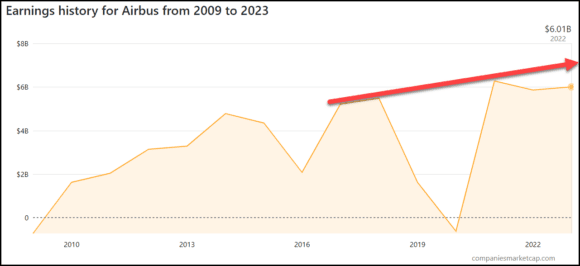Airbus decision on the NEO has been delayed as it attempts to obtain additional funding from the engine manufacturers, and the timing of the LEAP-X engine from CFM International, the full version of which may be delayed to 2018
Airbus, and John Leahy, have been touting the A320NEO re-engining program as an interim solution until a new aircraft can be developed in the 2025 time frame that takes advantage of new open rotor technologies. With either the PW GTF or CFM International LEAP-X engines, a 15% improvement in fuel burn could be expected, which should translate to operating cost savings of 6-8% prior to capital costs, fuel being just under half of operating costs.
Boeing has criticized the program, indicating that after capital costs, only an incremental gain of 3-5% would remain. Airlines however, for whom a 1% difference in costs can mean the difference between profit and loss, remain interested in an aircraft with 15% lower fuel burn.
Airbus has two critical issues holding up the decision to move forward with the NEO. The first is capital. Airbus delays with the A380 program, which has still not achieved high production rates, have cost it dearly, and the new technology A350XWB program, using carbon fiber technologies, will require a substantial investment over the next three years. With launch aid now under scrutiny from the WTO, Airbus must find additional capital for new programs.
At the same time, Airbus engineering resources must be focused on bringing the A350XWB to market on time, as the company must learn from its own A380 shortcomings as well as Boeing’s troubles with the much-delayed 787 program. EADS has indicated that it will not shortchange the A350XWB program in order to complete the NEO program.
So where does Airbus come up with the resources to complete the program.? Now it is looking to the engine manufacturers, who stand to gain through additional engine sales should the program move forward. Airbus is actively in risk sharing discussions with the engine manufacturers, each of which can’t afford to ignore about half of the current narrow-body market.
Pratt & Whitney, with its innovative GTF engine, would replace IAE as an engine supplier for the A320 family, and achieve full revenues rather than the 40% position they share with Rolls-Royce on the IAE program. This would be another win for the GTF program, already selected by Bombardier for the CSeries, Irkut for the MS-21, and Mitsubishi for the MRJ. As PW has no current position on the Boeing 737 series and a re-engining is unlikely, it will need to wait for Boeing’s all new program in 2020 to compete.
CFM International, which is already well positioned on the aircraft, needs a western platform for its LEAP-X engine, currently only selected for the COMAC C919. However, the full version of the LEAP-X, originally scheduled for 2016, will likely now not be available until 2018, with a less capable version provided to COMAC for initial C919 production.
The LEAP-X, which is utilizing similar technology to the GE90 and GEnx wide body engines, will likely be delayed in providing its full 15%-16% fuel burn reduction until the second version of the engine, with only 10%-12% fuel savings from the LEAP-X 1C model in 2016 when the NEO program would be scheduled to begin, and the 15%-16% on the more advanced LEAP-X 2C model in 2018.
However, with only 10 years between introduction of the NEO and a likely new model from Airbus in the 2026-2027 time frame, and additional two year delay for the LEAP-X-2C would provide only an eight year production run, further complicating the economics for the re-engining program.
Of course, since CFM is a joint venture of GE and France’s SNECMA unit of SAFRAN, politics may also come into play. If the French partner is delayed, would Airbus move forward with only the American firm (albeit MTU participates in the GTF program)? With the MTU participation in the PW GTF program, it is likely that the German and French factions in Airbus may be supporting different decisions.
The bottom line will come down to economic contributions and how hungry the engine manufacturers are for customers to launch their new technologies. It is likely that if one engine manufacturer moves forward, the other will need also move forward from a competitive standpoint. Pratt & Whitney appears to be in the driver’s seat – having a timing advantage over CFM. If they choose to gain market share at Airbus and invest in the program, CFM will need to react in the near term – but won’t have the advanced technology engine ready in time to successfully compete.



